 The following article is a small excerpt from one of my books. I hope you’ll want to learn more and let me help you to get into the best shape of your life.
The following article is a small excerpt from one of my books. I hope you’ll want to learn more and let me help you to get into the best shape of your life.

Have you ever gotten into your car to go somewhere specific and not known how to get there, and if you didn’t know where you were going, you would usually ask directions or check out a map to see what the best way there would be. Well think of training your body in a similar way. We have over the years of training, and having coaches train us forgotten why we are doing what we are doing. We do certain exercises for a number of reps and sets and don’t really know why, just that we have to do it because that’s the way they’ve done it for years.
When you begin to understand why you’re doing what you are doing, then its easier for you to accomplish your goal and become the best you can be.
In the gym I often ask people what they are doing and I often get the same response…3 sets of 10. I ask why? There answer is because! I suggest why don’t they just do one set of 30 and go home, and they look at me like I’m from mars. Do you know what energy system you are training, ATP, Lactate, Glycogen or fat? Are you training for strength, power, quickness, endurance or a combination? And if you don’t know what you are doing and why, then why are you training at all? To get maximum performance you must start thinking of training your body smart and begin to train from the inside out.
The first energy system is the ATP system. ATP (adenosine triphosphate) is the chemical compound which provides the energy to power muscle cell contraction. A single ATP molecule contains an amino acid base (adenosine), a sugar (ribose) and three phosphate groups. The energy of the ATP molecule is stored in the phosphate groups, and when these high energy phosphate bonds are broken during the processes of cellular metabolism, the energy is then available for muscle contraction and other vital cellular functions.. However the cellular storage capacity for ATP is limited, and at maximum work levels ATP stored in the muscle is depleted within 10 seconds.
What this means is that it is physiologically impossible to ask an athlete to perform at 100%…Full out for more than 10 seconds. They simply run out of ATP.
Now let’s think about this for a moment. We’ve all had coaches who have asked us to perform wind sprints. We start at one end of a playing field and sprint to the other end and back. They then ask us to do it again…and think we can do it faster then the first…and the third time should be faster then the first two. These coaches don’t understand the energy systems and how to best train them, because if they did, they would realize that after 10 seconds of sprinting you start to slow down and no matter how hard you try you can not run faster….no ATP.
Now if you are training to play football, the average play lasts less then 10 seconds so what you’d like to do is develop the athletes ability to perform at maximum level for 10 seconds at a time. So wouldn’t it be better instead of wind sprints to run full out for 10 seconds and see how far you can run…then stop….walk jog…catch your breath and when you are fully recovered run full out again. This recovery time initially may take upwards of two minutes, but eventually you should be able to cut the recovery time to less then 30 seconds…the time it takes to regroup and start the play all over.
Now after running full out for 10 seconds you begin to slow down and the Lactate System begins. During this intense exercise period, the cardiovascular system of heart and lungs is unable to supply sufficient oxygen to individual muscle cells. Under these circumstances, energy can continue to be produced for a short period period of time and does not require oxygen. This is referred to as anaerobic. During the lactate system there is an accumulation of the metabolic by-product lactic acid, and thus, the “burn” felt in overworked muscles. This system is not meant for long-term exercise, as the accumulation of lactic acid and rapid depletion of cellular glucose stores quickly contributes to muscular fatigue. However this Lactate system allows you to perform at this level of intensity for between 10 seconds and 3 minutes and since this system does not need Oxygen, you are burning mostly carbohydrates. Now while you are in this system your body is resynthesizing ATP and putting it back in case you need to go full out for 10 seconds again.
After approximately 3 minutes, your body begins to slow down some more, and thus switches energy systems, this time to the glycogen energy system, which needs oxygen and is therefore aerobic. And this system lasts from about the 3 minute mark to about 2 hours. And finally after 2 hours your body will start to burn fat as its primary source of energy.
So molecules of readily-available glucose are stored in the body, as glycogen. The storage of glycogen in your body requires both water and space, so therefore relatively little is stored in your body. Fats, on the other hand, are far more efficiently stored and therefore can be accumulated almost without limit. The advantage of utilizing glucose as an energy source is that it is more quickly available than fats, and while it is most efficiently metabolized in the presence of oxygen, it does not require oxygen to produce energy.
Fats are the fuel of greatest importance to the endurance athlete. While their utilization absolutely requires the presence of oxygen, and is not as quickly available as glucose and its supply within the body is almost unlimited.
The disadvantages of fats as a fuel source is that they absolutely require the ongoing presence of oxygen within the cells to produce energy, and they are the slowest of the three sources to become available after the onset of exercise. A third feature, which may at times become a distinct disadvantage, is that while glycogen may be utilized by itself, fats require a small but critical amount of glycogen to produce energy.
Think of glycogen as a small pile of fast-burning kindling, and fats as heavy, thick logs. While the logs will supply far more total heat, they cannot burn well without kindling. On the other hand, kindling will burn rapidly and well, its relatively small supply will soon run out, leaving you without the energy to burn the logs. Therefore, the key element in energy management is to rely on fats as the primary fuel source, and to conserve the limited supply of glycogen for “kindling” and for carefully planned spurts of anaerobic activity.
The body is well adapted to utilizing the fuel most suited to the exercise at hand. At rest and during moderate exercise, with plenty of oxygen available, the body will utilize primarily fats, the fuel in greatest supply, with just enough glycogen being used as kindling to produce energy at its highest efficiency. As the intensity of exercise increases, as during a tough hill climb or a prolonged sprint, oxygen supplies may become insufficient and energy utilization shifts from the oxygen, to those which do not require oxygen.
Fats are utilized less and less, while glycogen becomes more and more important—so that at maximum intensity, the reliance on glycogen is approaching 100%. At this intensity of exercise, glycogen stores are rapidly depleted, and the accumulation of lactic acid greatly increased.
Once you know what system you need, and sometimes you end up using combinations of several, you can then perform at the top of your game without getting tired, and this will result in you having less injuries and being able to give it your all for an entire game. So you owe it to yourself to understand what system you are training….The ATP system, which lasts for up to 10 seconds (anaerobic), the Lactate System (anaerobic) which lasts from 10 seconds to about 3 minutes. The Glycogen system (aerobic) which lasts from 3 minutes to 2 hours or the Fat System (aerobic) which takes you past the 2 hour mark for long distance or endurance athletes.
Now that you know what energy system you are training, what are you training for? Are you training for, strength, power, endurance or some combination. In order to know what you’re doing let’s try to understand the terms.
Strength is defined as the maximum force you can exert in one voluntary contraction. In other words what is the maximum amount of weight you can bench press, one time by yourself. Power is work divided by time. The athlete who can do more work in the same amount of time has more power.
Almost all sports involve power to some degree, so if you can lift a certain amount of weight 3 times while someone else can only lift it once…you have more power and therefore an advantage.
Muscular endurance is also involved in a lot of different sports, and just because you can leg press 900 pounds, doesn’t mean you can bike or ski all day long without getting tired. You will eventually run out of strength because you have trained the wrong muscles to do the wrong things.
Training is very specific. So during the off season you may train for strength and power and now about 8 weeks from the start of your season you begin to train for muscular endurance. This involves performing the same exercises, but doing 30 to 50 reps with lighter weights and less rest in between sets. Training like this should allow you to perform all day long without getting tired.
So when you are designing your exercise program, you should know why you are doing what you are doing and not just 3 sets of 10 or 15…just because everyone else is. You should choose a weight that you can lift for 15 reps only…and can’t do the 16th rep. Then rest and drink water and do the second set. This time you will probably only be able to do 10 to 12 reps. Rest and Drink again. (the reason you should keep drinking is that 78% of your muscles are water and if you don’t fuel them, they can’t perform) Now for the third set you will probably only be able to do between 6 and 8 reps. Now you will stay at this weight until you can do 3 sets of 15 reps. Once you can accomplish this it means your muscles have adjusted so now it’s time to either add more weight, increase the reps, or change the angle in which you are working and start all over again. You must train from a wide grip to a narrow grip, from a dumbbell to a barbell, from standing to sitting, from lying to standing up. This is how weight training is done.
Now during exercise and playing sports, you’re going to end up with something that is called oxidative stress (read Total health) Basically you have a bunch of good cells trying to do good things being constantly attacked by free radicals who try to steal the good things out of your good cells. This makes you weaker, and every time you get a weaker cell you get less performance. So in order to combat these free radical you have to have good nutrition…you must be willing to eat good food. And the best defense against free radicals are anti oxidants which are found in Fresh Fruits and Vegetables. (In 1997 the American Institute for Cancer Research released it’s recommendations for a plant based diet, centered around Fruits, vegetable, whole grains and beans. This diet with 6 to 12 servings a day provides the antioxidants, vitamins and protective phytochemicals that can prevent and or repair cell damage.)
Nutrition equals Performance, and if you don’t fuel the cells properly, you can’t perform. During Competition the most important nutrient you can get is water…not a sports drink!!! This will also help to prevent cramps due to lack of water. After Competition you should also start immediately to refuel you body, so you can begin to repair the tissue damage that has occurred in your body, so that you can be prepared to perform at the next practice or game.
Training smart will help you to perform at the top of you game.
I know you want to get in shape and look great. Whatever your fitness goal…to slim down…gain muscle…tone your arms or flatten your tummy…I’m here to help you accomplish your goals and to improve your fitness level. In my book ‘Get Fit Stay Fit’ You will learn how to select and combine your diet with exercise, so that you can be the best you can be.

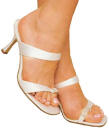 I hope you’ll want to learn more and let me help you to get into the best shape of your life.
I hope you’ll want to learn more and let me help you to get into the best shape of your life.

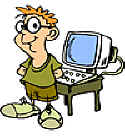 Computer Ergonomics is about things that you can do to make working on a computer more comfortable and better for your body. For example, wearing a bike helmet when riding a bike and a seatbelt when riding in a car are two simple things that you do to be safe and
Computer Ergonomics is about things that you can do to make working on a computer more comfortable and better for your body. For example, wearing a bike helmet when riding a bike and a seatbelt when riding in a car are two simple things that you do to be safe and 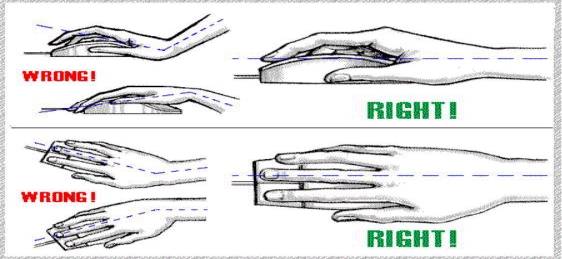 Posture. No one posture is perfect. You do not have to be “military” but getting comfortable is essential. Footrests help, (or a book or lunch pail or anything handy to rest your feet up a bit), as do cushions if your chair is not providing adequate support. The most important rule is to avoid prolonged positions. Shake your hands and shoulders now and then. Keep lose.
Posture. No one posture is perfect. You do not have to be “military” but getting comfortable is essential. Footrests help, (or a book or lunch pail or anything handy to rest your feet up a bit), as do cushions if your chair is not providing adequate support. The most important rule is to avoid prolonged positions. Shake your hands and shoulders now and then. Keep lose.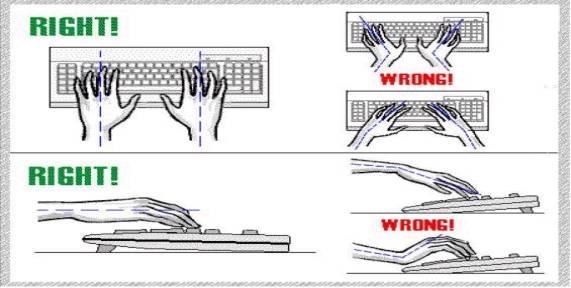 Learning how to adjust the computer workstation and organize all your work material is key to developing good work habits
Learning how to adjust the computer workstation and organize all your work material is key to developing good work habits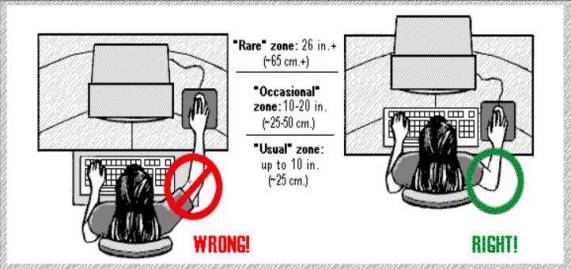 If you already have mechanical body problems, such as neck arthritis or carpel tunnel syndrome, it is necessary to take breaks frequently; on the order of three or four mini-breaks per hour.
If you already have mechanical body problems, such as neck arthritis or carpel tunnel syndrome, it is necessary to take breaks frequently; on the order of three or four mini-breaks per hour.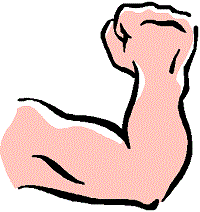 The following article is a small excerpt from one of my books. I hope you’ll want to learn more and let me help you to get into the best shape of your life.
The following article is a small excerpt from one of my books. I hope you’ll want to learn more and let me help you to get into the best shape of your life.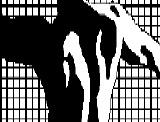 The following article is a small excerpt from one of my books. I hope you’ll want to learn more and let me help you to get into the best shape of your life.
The following article is a small excerpt from one of my books. I hope you’ll want to learn more and let me help you to get into the best shape of your life.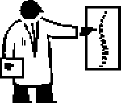 The following article is a small excerpt from one of my books. I hope you’ll want to learn more and let me help you to get into the best shape of your life.
The following article is a small excerpt from one of my books. I hope you’ll want to learn more and let me help you to get into the best shape of your life.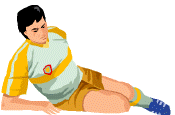 The following article is a small excerpt from one of my books. I hope you’ll want to learn more and let me help you to get into the best shape of your life.
The following article is a small excerpt from one of my books. I hope you’ll want to learn more and let me help you to get into the best shape of your life.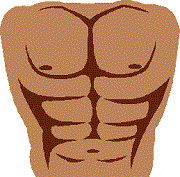 The following article is a small excerpt from one of my books. I hope you’ll want to learn more and let me help you to get into the best shape of your life.
The following article is a small excerpt from one of my books. I hope you’ll want to learn more and let me help you to get into the best shape of your life.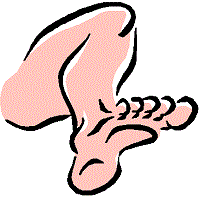 The following article is a small excerpt from one of my books. I hope you’ll want to learn more and let me help you to get into the best shape of your life.
The following article is a small excerpt from one of my books. I hope you’ll want to learn more and let me help you to get into the best shape of your life. The following article is a small excerpt from one of my books. I hope you’ll want to learn more and let me help you to get into the best shape of your life.
The following article is a small excerpt from one of my books. I hope you’ll want to learn more and let me help you to get into the best shape of your life. The following article is a small excerpt from one of my books. I hope you’ll want to learn more and let me help you to get into the best shape of your life.
The following article is a small excerpt from one of my books. I hope you’ll want to learn more and let me help you to get into the best shape of your life.